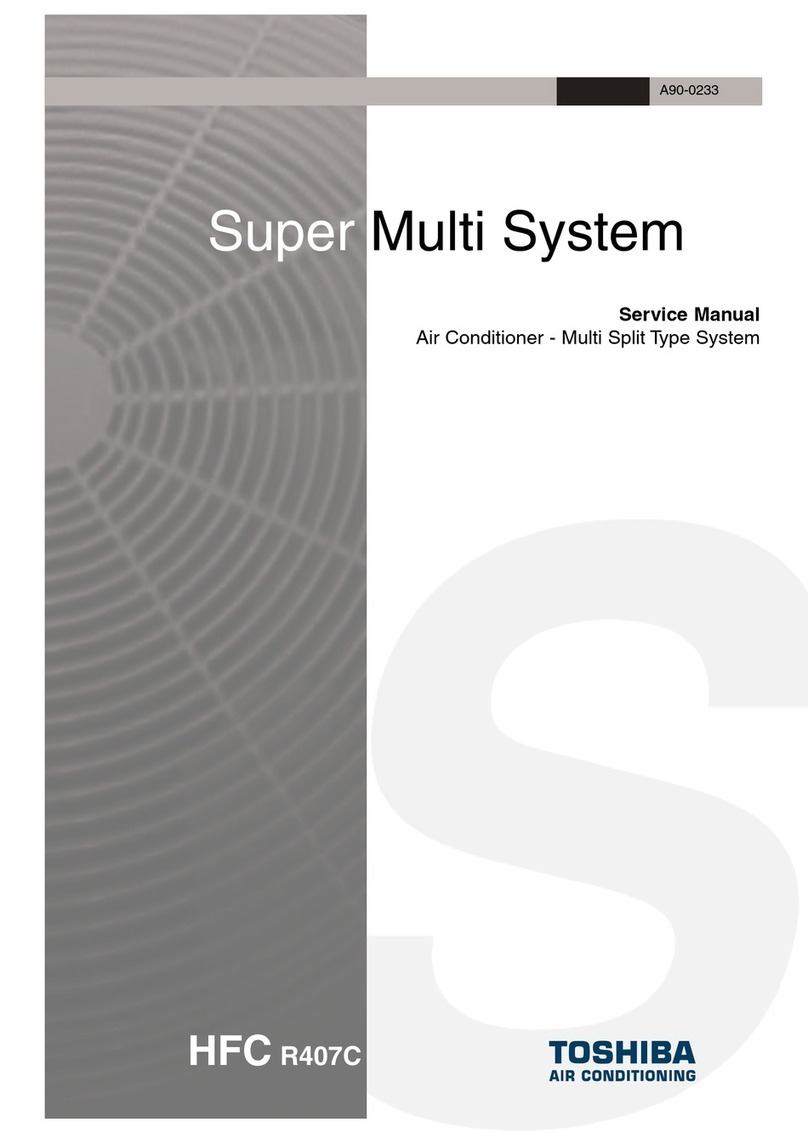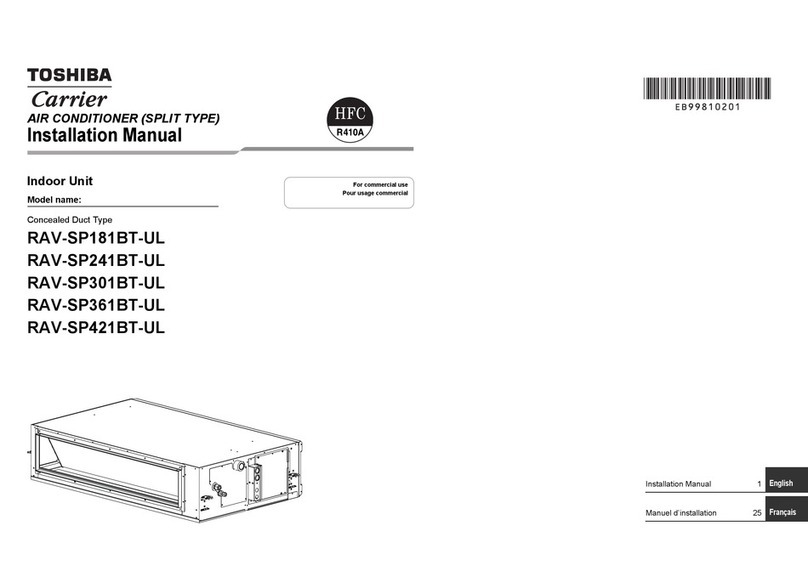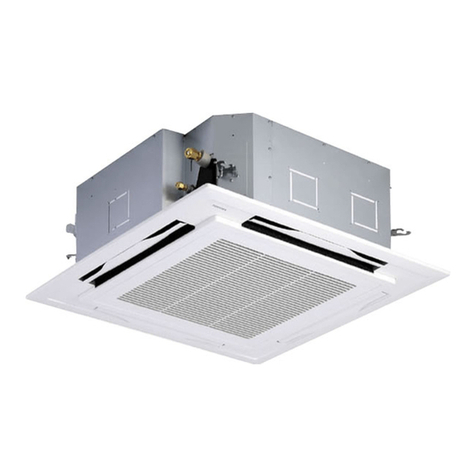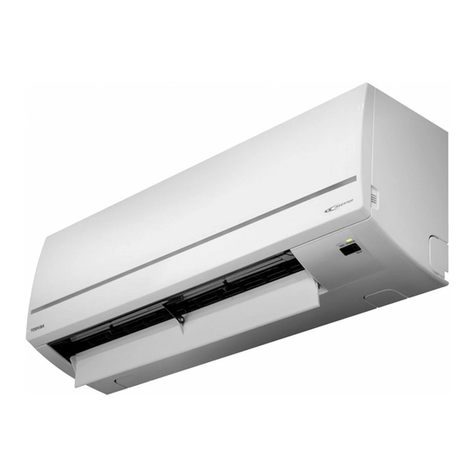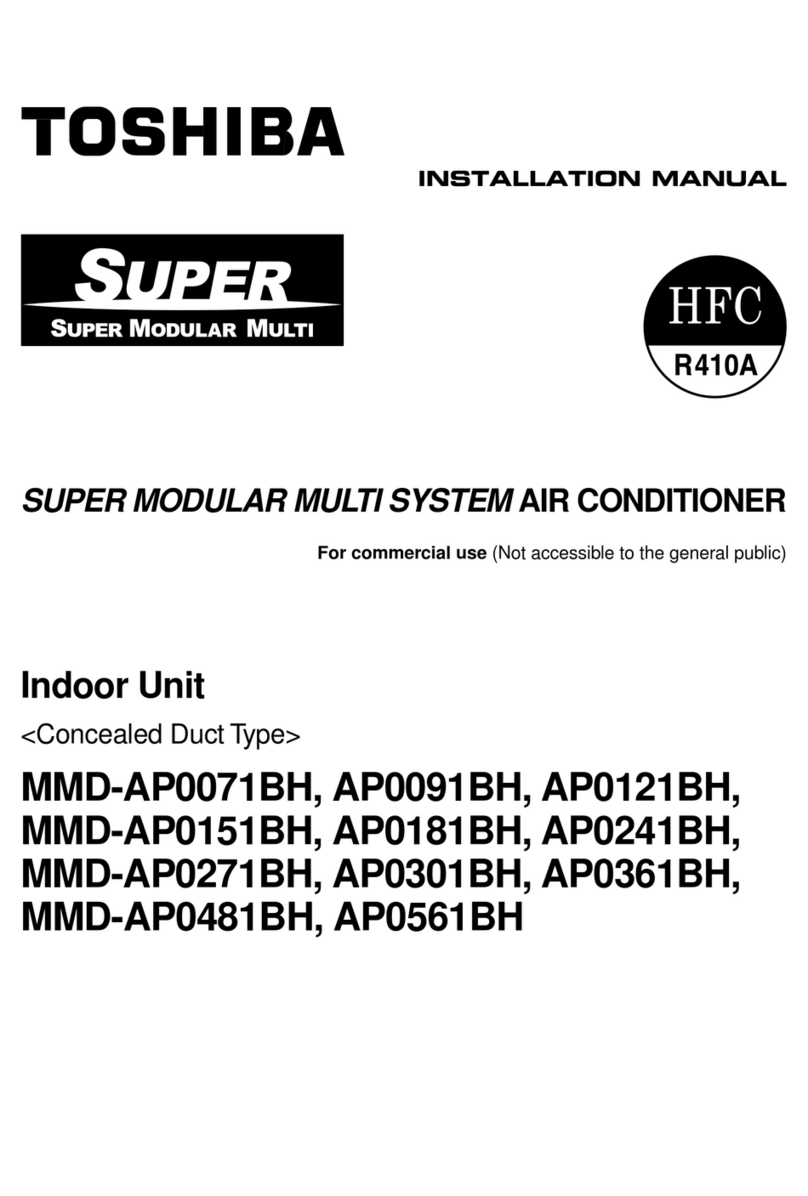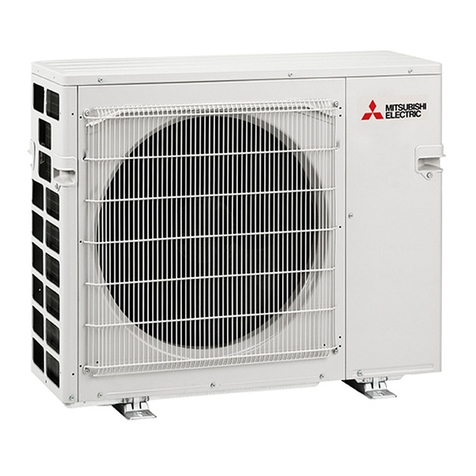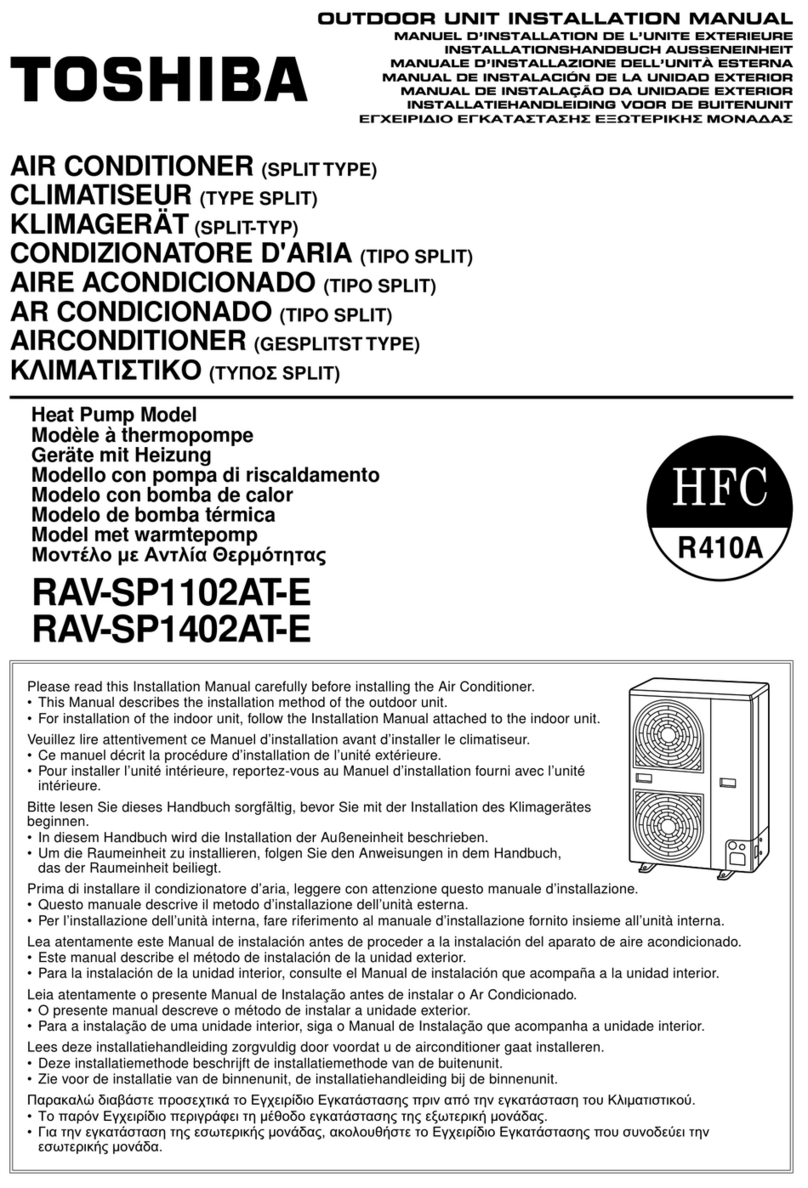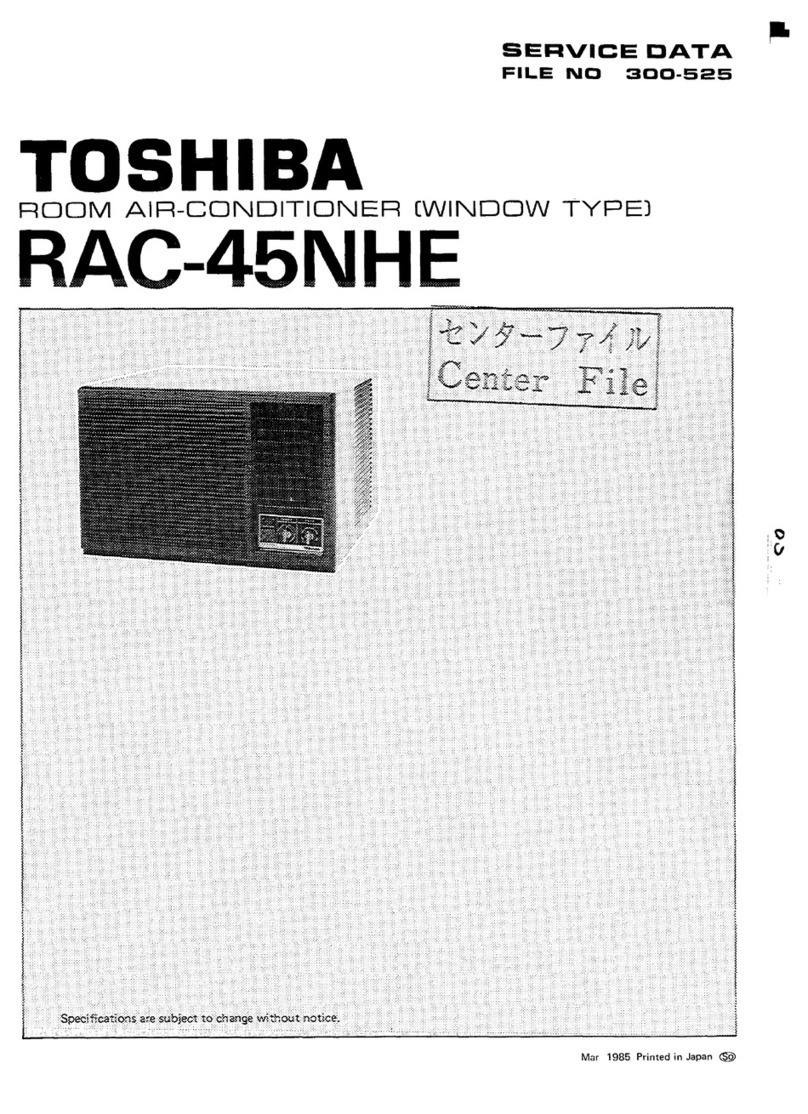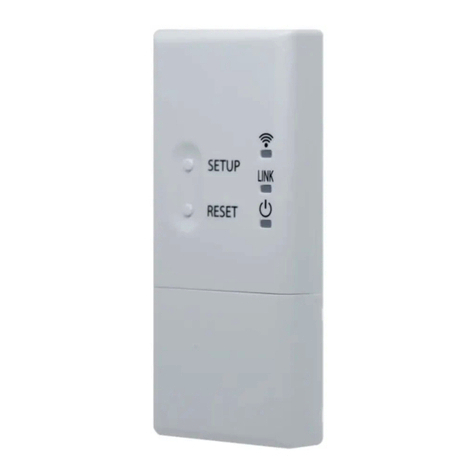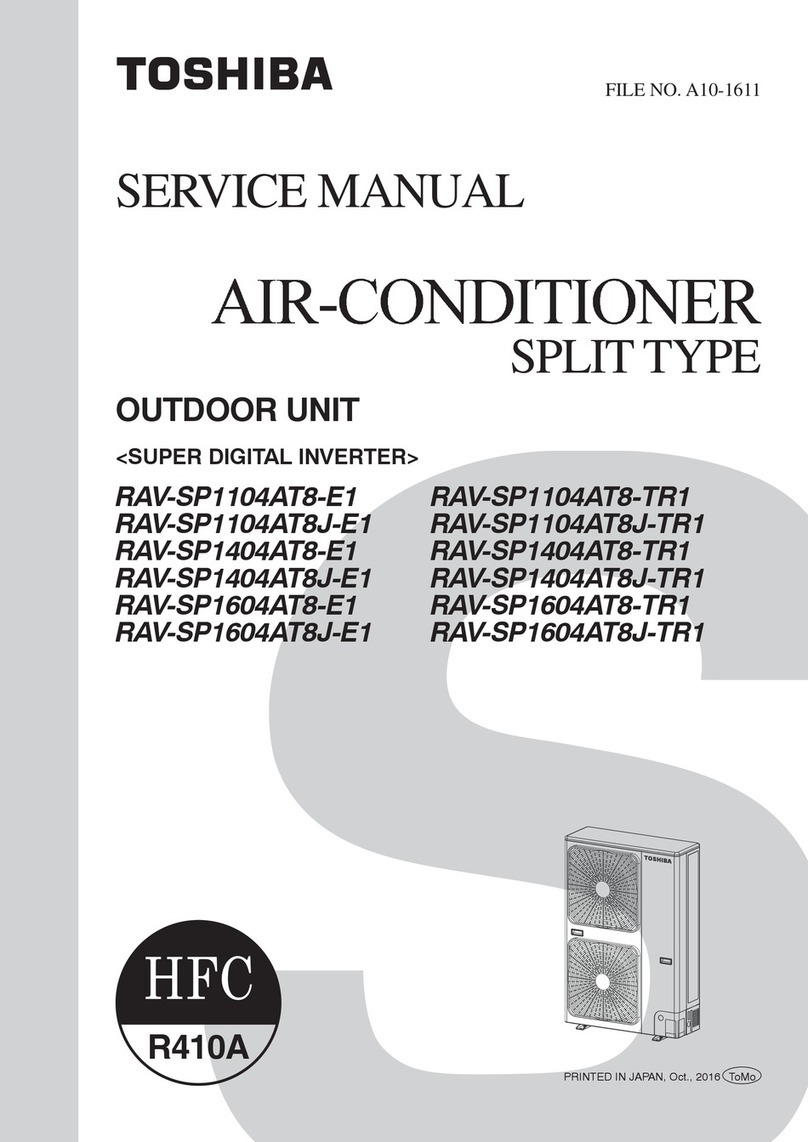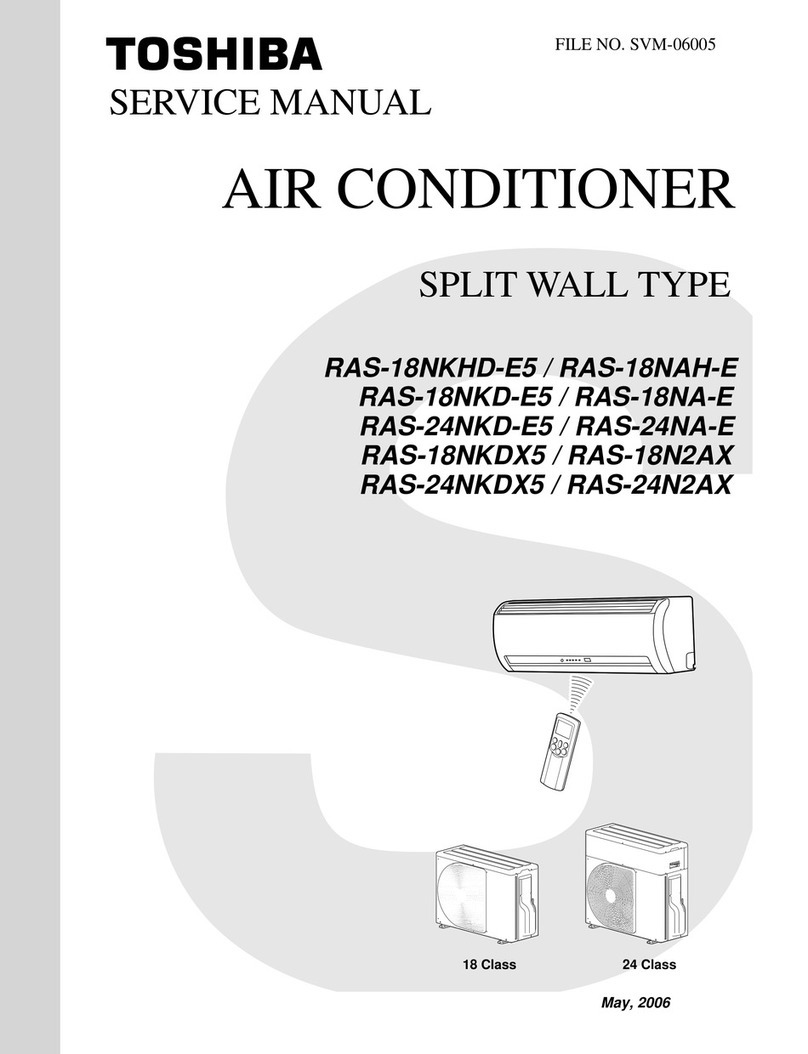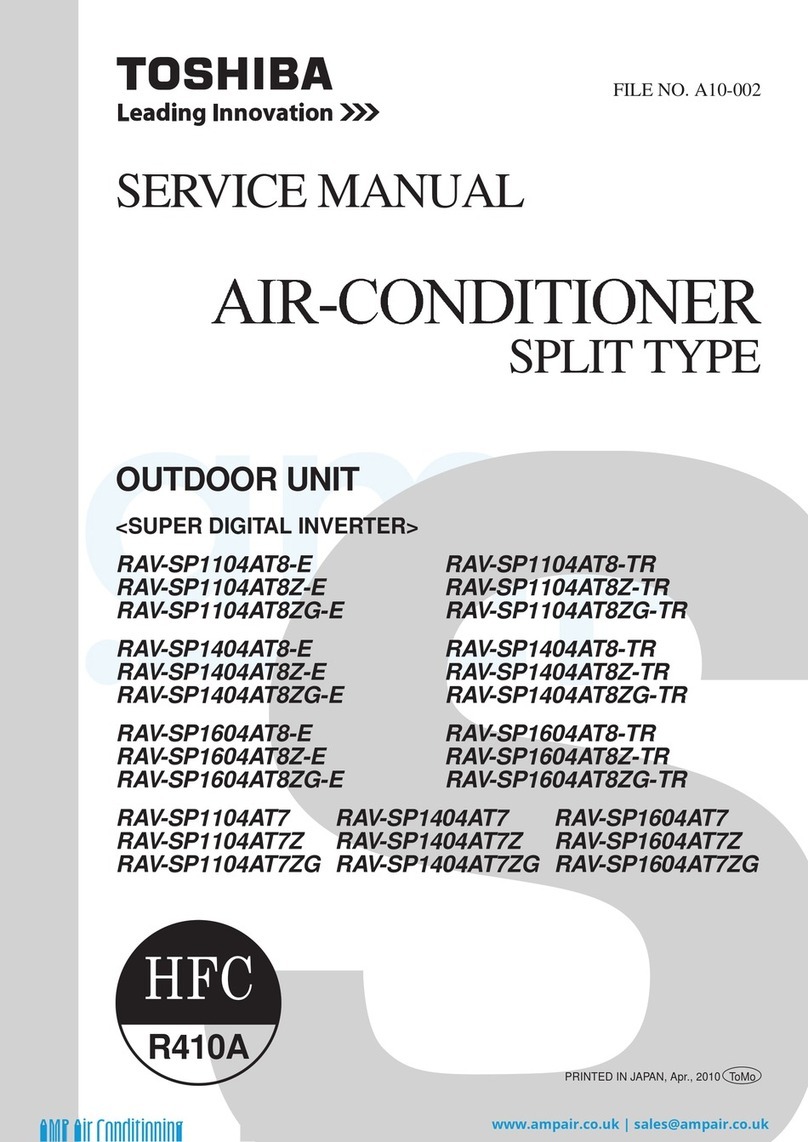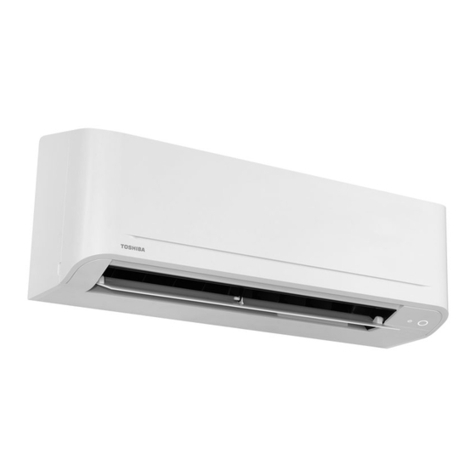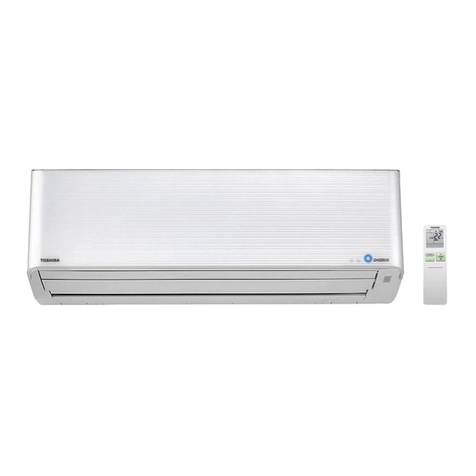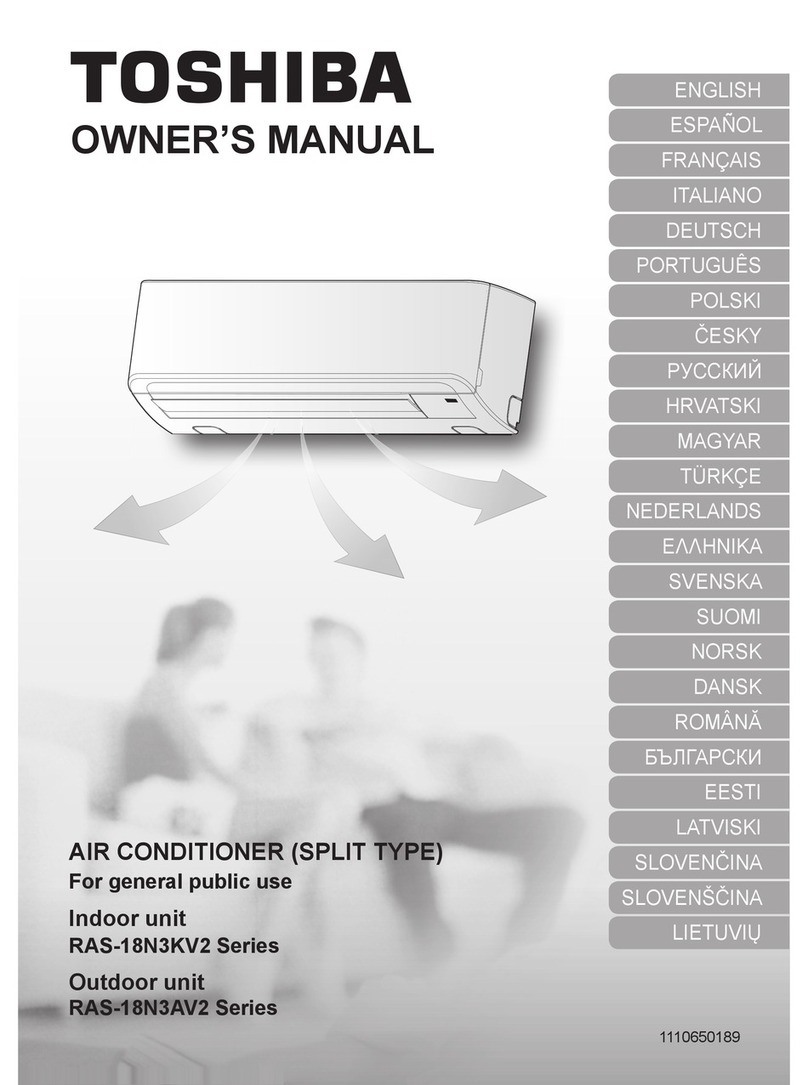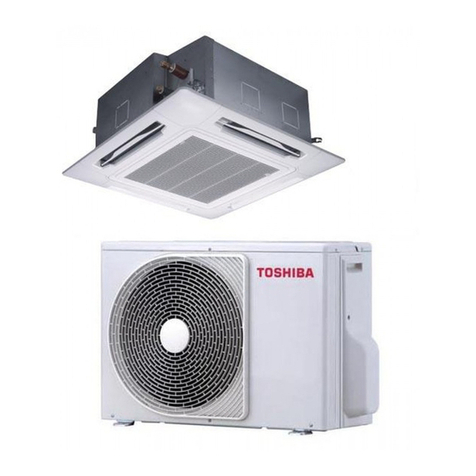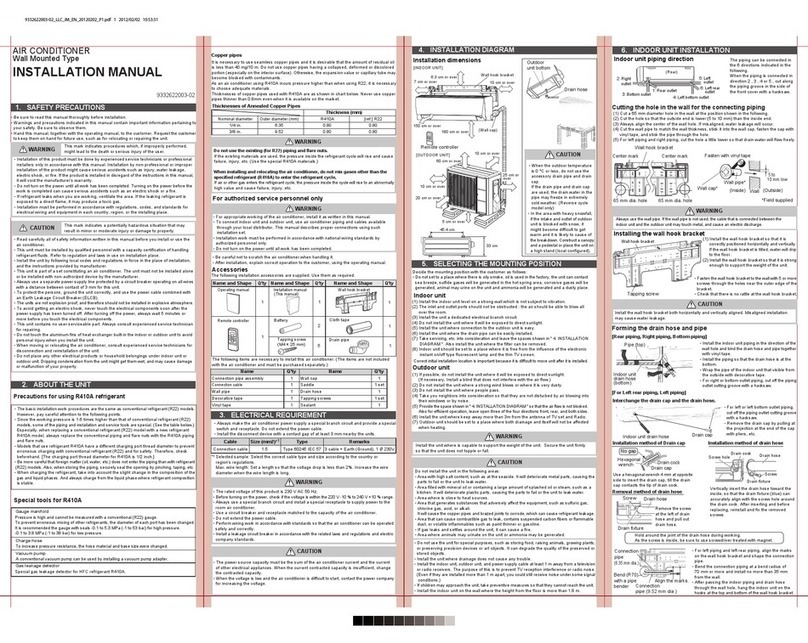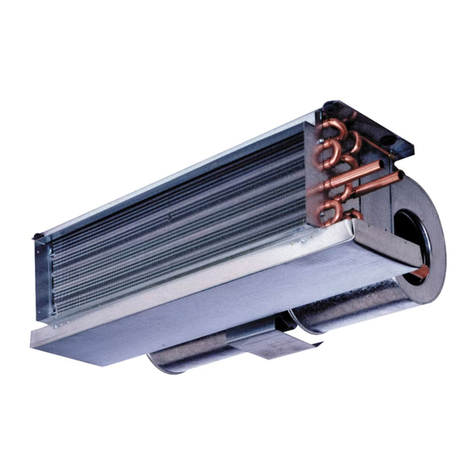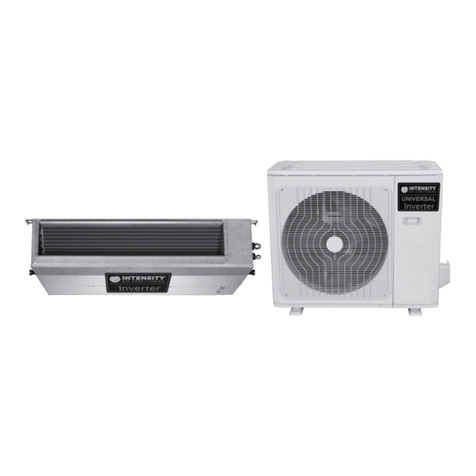
– 2 –
EN
Thank you for purchasing this Toshiba air conditioner.
Please read carefully through these instructions that contain important information, which complies with the
''Machinery'' Directive(Directive 2006/42/EC), and ensure that you understand them.
After completing the installation work, hand over this Installation Manual as well as the Owner’s Manual provided
with the outdoor unit to the user, and ask the user to keep them in a safe place for future reference.
Generic denomination: Air conditioner
Definition of qualified installer or qualified service person
The air conditioner must be installed, maintained, repaired and removed by a qualified installer or qualified service
person. When any of these jobs is to be done, ask a qualified installer or qualified service person to do them.
A qualified installer or qualified service person is an agent who has the qualifications and knowledge described in the
table below.
Agent Qualifications and knowledge which the agent must have
Qualified
installer (*1)
• The qualified installer is a person who installs, maintains, relocates and removes the air conditioners
made by Toshiba Carrier Corporation. He or she has been trained to install, maintain, relocate and
remove the air conditioners made by Toshiba Carrier Corporation or, alternatively, he or she has been
instructed in such operations by an individual or individuals who have been trained and is thus
thoroughly acquainted with the knowledge related to these operations.
• The qualified installer who is allowed to do the electrical work involved in installation, relocation and
removal has the qualifications pertaining to this electrical work as stipulated by the local laws and
regulations, and he or she is a person who has been trained in matters relating to electrical work on the
air conditioners made by Toshiba Carrier Corporation or, alternatively, he or she has been instructed in
such matters by an individual or individuals who have been trained and is thus thoroughly acquainted
with the knowledge related to this work.
• The qualified installer who is allowed to do the refrigerant handling and piping work involved in
installation, relocation and removal has the qualifications pertaining to this refrigerant handling and
piping work as stipulated by the local laws and regulations, and he or she is a person who has been
trained in matters relating to refrigerant handling and piping work on the air conditioners made by
Toshiba Carrier Corporation or, alternatively, he or she has been instructed in such matters by an
individual or individuals who have been trained and is thus thoroughly acquainted with the knowledge
related to this work.
• The qualified installer who is allowed to work at heights has been trained in matters relating to working at
heights with the air conditioners made by Toshiba Carrier Corporation or, alternatively, he or she has
been instructed in such matters by an individual or individuals who have been trained and is thus
thoroughly acquainted with the knowledge related to this work.
Qualified service
person (*1)
• The qualified service person is a person who installs, repairs, maintains, relocates and removes the air
conditioners made by Toshiba Carrier Corporation. He or she has been trained to install, repair,
maintain, relocate and remove the air conditioners made by Toshiba Carrier Corporation or, alternatively,
he or she has been instructed in such operations by an individual or individuals who have been trained
and is thus thoroughly acquainted with the knowledge related to these operations.
• The qualified service person who is allowed to do the electrical work involved in installation, repair,
relocation and removal has the qualifications pertaining to this electrical work as stipulated by the local
laws and regulations, and he or she is a person who has been trained in matters relating to electrical
work on the air conditioners made by Toshiba Carrier Corporation or, alternatively, he or she has been
instructed in such matters by an individual or individuals who have been trained and is thus thoroughly
acquainted with the knowledge related to this work.
• The qualified service person who is allowed to do the refrigerant handling and piping work involved in
installation, repair, relocation and removal has the qualifications pertaining to this refrigerant handling
and piping work as stipulated by the local laws and regulations, and he or she is a person who has been
trained in matters relating to refrigerant handling and piping work on the air conditioners made by
Toshiba Carrier Corporation or, alternatively, he or she has been instructed in such matters by an
individual or individuals who have been trained and is thus thoroughly acquainted with the knowledge
related to this work.
• The qualified service person who is allowed to work at heights has been trained in matters relating to
working at heights with the air conditioners made by Toshiba Carrier Corporation or, alternatively, he or
she has been instructed in such matters by an individual or individuals who have been trained and is
thus thoroughly acquainted with the knowledge related to this work.
Definition of protective gear
When the air conditioner is to be transported, installed, maintained, repaired or removed, wear protective gloves and
‘safety’ work clothing.
In addition to such normal protective gear, wear the protective gear described below when undertaking the special
work detailed in the table below.
Failure to wear the proper protective gear is dangerous because you will be more susceptible to injury, burns,
electric shocks and other injuries.
These safety cautions describe important matters concerning safety to prevent injury to users or other people and
damages to property. Please read through this manual after understanding the contents below (meanings of
indications), and be sure to follow the description.
Work undertaken Protective gear worn
All types of work Protective gloves
‘Safety’ working clothing
Electrical-related work
Gloves to provide protection from electric shock
Insulating shoes
Clothing to provide protection from electric shock
Work done at heights
(50 cm or more) Helmets for use in industry
Transportation of heavy
objects Shoes with additional protective toecap
Repair of outdoor unit Gloves to provide protection for electricians
Indication Meaning of Indication
WARNING Text set off in this manner indicates that failure to adhere to the directions in the warning could result
in serious bodily harm (1) or loss of life if the product is handled improperly.
CAUTION Text set off in this manner indicates that failure to adhere to the directions in the caution could result in
slight injury (2) or damage (3) to property if the product is handled improperly.
1: Serious bodily harm indicates loss of eyesight, injury, burns, electric shock, bone fracture, poisoning, and other
injuries which leave aftereffect and require hospitalization or long-term treatment as an outpatient.
2: Slight injury indicates injury, burns, electric shock, and other injuries which do not require hospitalization or long-
term treatment as an outpatient.
3: Damage to property indicates damage extending to buildings, household effects, domestic livestock, and pets.
WARNING
(Risk of fire)
This mark is for R32 refrigerant only. Refrigerant type is written on nameplate of
outdoor unit.
In case that refrigerant type is R32, this unit uses a flammable refrigerant.
If refrigerant leaks and comes in contact with fire or heating part, it will create
harmful gas and there is risk of fire.
Read the OWNER’S MANUAL carefully before operation.
Service personnel are required to carefully read the OWNER’S MANUAL and INSTALLATION MANUAL
before operation.
Further information is available in the OWNER’S MANUAL, INSTALLATION MANUAL, and the like.
3-EN 4-EN
OM_D0X7303301-01_EN_Print.book Page 2 Friday, May 19, 2023 6:48 PM
